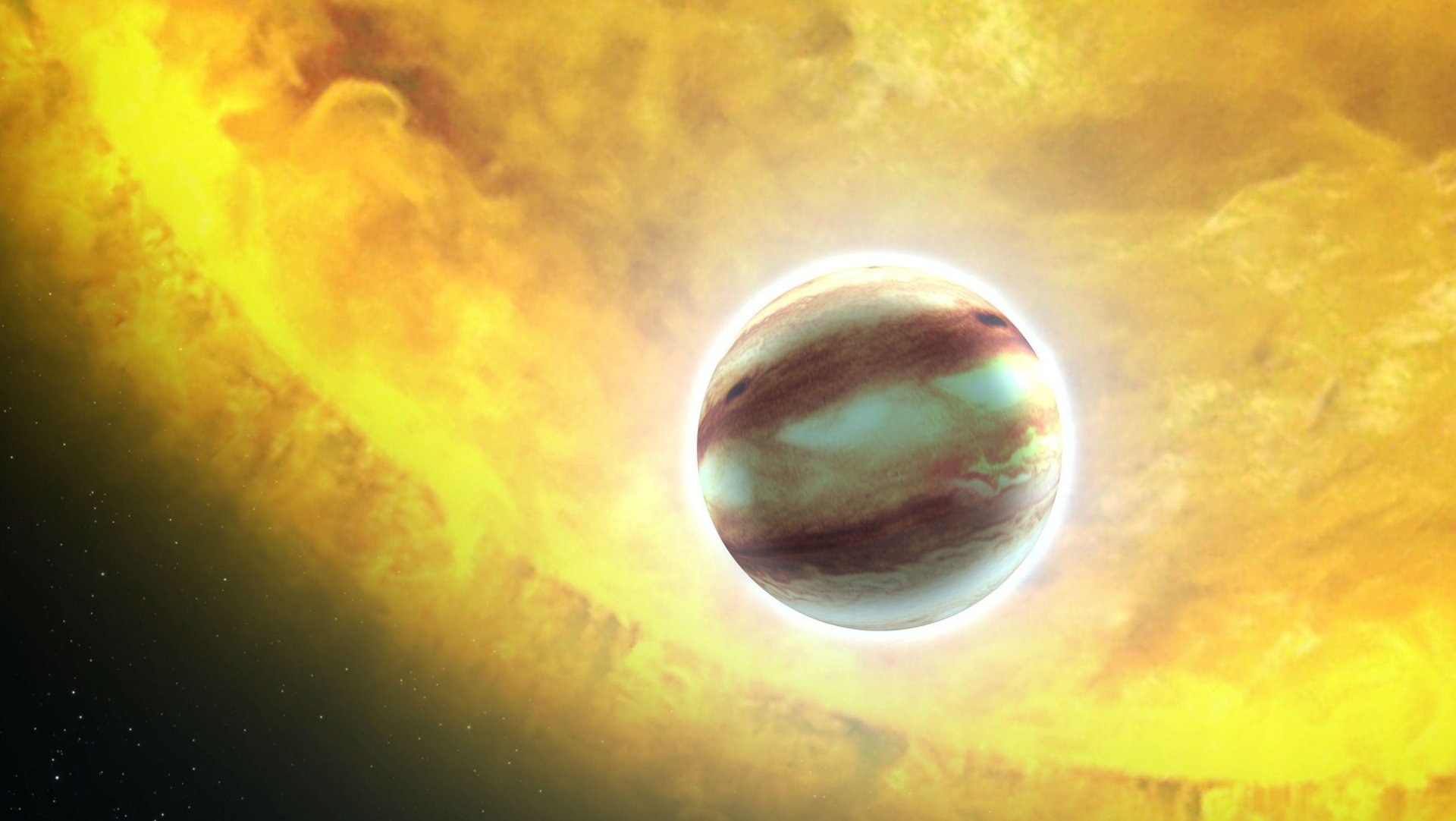Scientists think they’ve found a planet with weather so hot, its clouds are vaporized jewels
No matter how brutally hot the summers are wherever you live, they’ve got nothing on the staggering temperatures elsewhere in the Milky Way.


No matter how brutally hot the summers are wherever you live, they’ve got nothing on the staggering temperatures elsewhere in the Milky Way.
On HAT-P-7b, a gas giant about 16 times the size of the Earth and 1,000 light years away, temperatures hover around 4,450 °F (4,180 °C). This planet rotates around a star, HAT-P-7, twice the size of our sun, every two earth days. And for the first time, astrophysicists believe they’ve found evidence of weather on the sweltering planet, thanks to data from NASA’s Kepler observer.
A paper published Dec. 12 in Nature Astronomy analyzed four years worth of data from Kepler, which was sent far out into the Milky Way in 2009 to find exoplanets. The observer collects data on heavenly bodies that give off light, including stars. It can find planets by looking for changes in a star’s brightness over time—a change can be an indication that a planet has passed in front of it.
Kepler can detect differences in planet brightness, too. British researchers noticed that Kepler’s data showed a changing pattern in the amount of light reflected back from HAT-P-7b over time. These changes, they think, show evidence of the atmosphere swirling around the planet—in other words, weather. ”This planet has very strong winds going round it,” says David Armstrong, a physicist at the University of Warwick and lead author of the paper. These winds are caused by an atmosphere that is heated unevenly: one side of HAT-P-7b is always facing the star, and is therefore much hotter, than the other. Wind results from colder air whooshing in underneath rising warmer air. On HAT-P-7b, “what those [winds] do is push clouds from the colder, dark side of the planet onto the brighter face side, and those clouds reflect the light from the stars.” The displaced clouds reflect more light away from the planet—a phenomenon called the albedo effect, which also happens here on Earth.
Clouds form when the air is colder and forces substances to condense into little droplets of solids spread throughout the air. On our planet, clouds are made up of a mix of tiny particles of water that form ice crystals around dust or other particles in the atmosphere.
But on a planet as hot as HAT-P-7b, clouds are likely made of materials that have a much higher melting and boiling point; at those temperatures, most compounds would be permanently in their gaseous states. “Something that has the right sort properties is called corundum,” says Armstrong. On Earth, where temperatures are much lower, corundum is found in rocks—the mineral, when combined with the right elements, forms rubies and sapphires. On HAT-P-7b, the mineral might be forming clouds. “It’s a very good possibility that these clouds are made of corundum, and we’re seeing essentially big condensed clouds of minerals being blown across the planet,” says Armstrong.
Scientists can’t tell for sure that these are gem-based clouds because they’re making observations from billions of miles away; they’d need a sample to analyze to confirm. Theoretically, weather can happen on any planet with an atmosphere, but this is the first time patterns that look like it have been observed in a gas giant exoplanet.